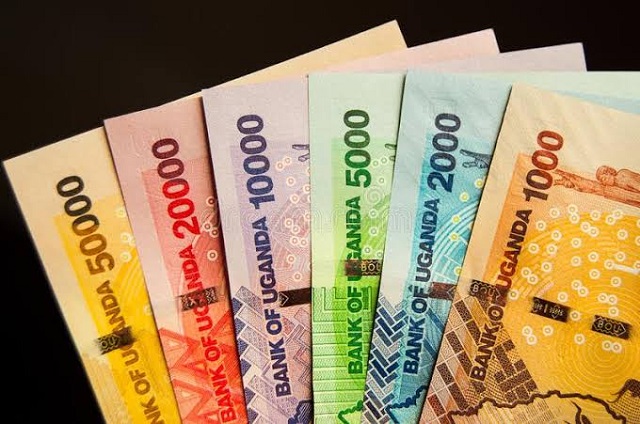
Kampala, Uganda | THE INDEPENDENT | The Uganda shilling continues to depreciate against the US dollar as both local and external factors exert pressure on the local and other emerging currency markets.
For more than a week, the shilling has just stayed short of touching the 3,900 level against the dollar, amidst sustained intervention into the market by the Bank of Uganda by selling dollars or buying out excess liquidity.
On Monday, the shilling opened at 3,865 shillings, having declined from 3,715 at the beginning of July, one of the fastest rates of depreciation in recent years, according to various monitoring tools and traders.
The Head of Trading Absa Bank Uganda, Catherine Kijjagulwe said: “The shilling remained on the back foot during the week as month-end inflows from NGOs and other sectors were outmatched by the healthy demand from corporates, offshores and the interbank keeping the unit weak at levels of 3860/3870. The unit is likely to continue buoying within the 3800-3900 trading range unless healthy flows come through to cover the continued demand.”
The persistent decline of the shilling was attributed to increased demand by offshore investors coupled with intensified demand by oil importers, according to Stephen Kaboyo, Managing Director at Alpha Capital Partners.
The rate of depreciation of the dollar has mainly been influenced by the skyrocketing costs of imports like fuel, cooking oil and steel, as well as transport and other services, which have had a spillover effect on the prices of other consumer imports.
In effect, one has to look for more shillings to buy the scarce dollar today than a month ago.
According to experts, the appreciation of the dollar against many currencies started in early 2020 when investors withdrew from foreign investments over the uncertainty of the future.
Pritosh Ranjan, Investment Director at Schroders Wealth Management wrote that in 2021, as economies opened, internationally traded commodities like petroleum products became more expensive, further boosting the dollar, before the outbreak of the Russia-Ukraine war earlier this year.
As the US fights the highest inflation rate in decades, the expected rise in the interest rates is also forcing holders of the dollar to retain it until the outlook of the market is more certain.
“Emerging countries that rely on commodities like Brazil and South Africa have seen their currencies perform better than for example the East African currencies,” Ranjan said on his company’s website.
Uganda’s main sources of foreign exchange are donor funds to the government and civil society, tourism and migrant workers’ remittances, coffee and gold exports.
While coffee exports have maintained an upward trend, having risen from 560 million dollars in 2020/2021 to 862 million dollars in 2021/22, the others have remained below the pre-Covid-19 levels.
Gold exports which had hit 1.8 billion dollars a year, were halted a year ago over taxation disputes with the government, while tourism which is worth 1.6 billion dollars is yet to recover to half its previous values.
This trend has caused discomfort among economists over the likely effects on the economy generally.
“The exchange rate remains a key variable in Uganda’s economy, therefore, the sustained depreciation will continue to pose serious economic challenges,” says Stephen Kaboyo.
The US central bank, the Federal Reserve says it will continue tightening its market for as long as inflation remains high, which according to Kaboyo will keep pressure on markets like in Uganda which rely on offshore investors, donor inflows and high imports.
“The interest rate hike in the US increases the relative returns on dollar investments and as a result, Uganda is likely to see more foreign investment outflows and as a consequence, higher cost of capital and re-pricing of risk in the short term,” he says.
In Kenya, the local currency has been depreciating against the dollar for more than a year, from 106 shillings to 119 shillings currently.
The slowdown of depreciation over the last one month has been attributed to the reduced demand in dollars in the country as markets stay in a wait-and-see situation ahead of the general election this month.
“The Kenya shilling remained weak as customers try to meet their pending commitments as elections draw near. The unit continues to trade within the 119.00-125.00 trading range and is anticipated to remain weak as the dollar supply remains thin,” said Absa’s Kijjagulwe.
The Kenyan unit had depreciated against the Ugandan currency from more than 36 in 2020 to 31.5 by the beginning of 2022, but has since slightly gained to 32.5 currently. This, according to the experts is mainly because of the increase in the cost of Uganda’s imports from Kenya especially fuel, vegetable oils, chemicals and building materials, among others.
The stabilization of the foreign exchange is expected to depend on what happens in the global market, including how the prices of global commodities like oil behave, while the long-term and more sustainable solution for Uganda is increasing exports and reducing imports.
Central banks are also facing foreign exchange reserve crises unless they use their reserves prudently while trying to control inflation and forex rates, one of the reasons stated for the fall of the Sri Lanka regime.
*****
URN
 The Independent Uganda: You get the Truth we Pay the Price
The Independent Uganda: You get the Truth we Pay the Price



